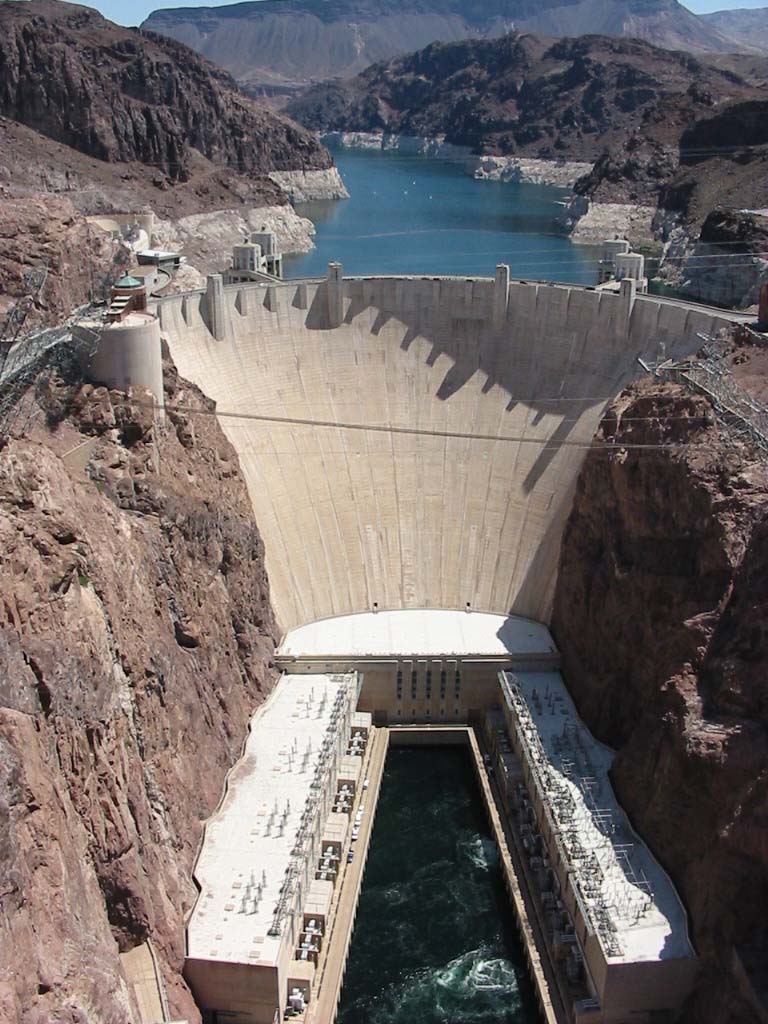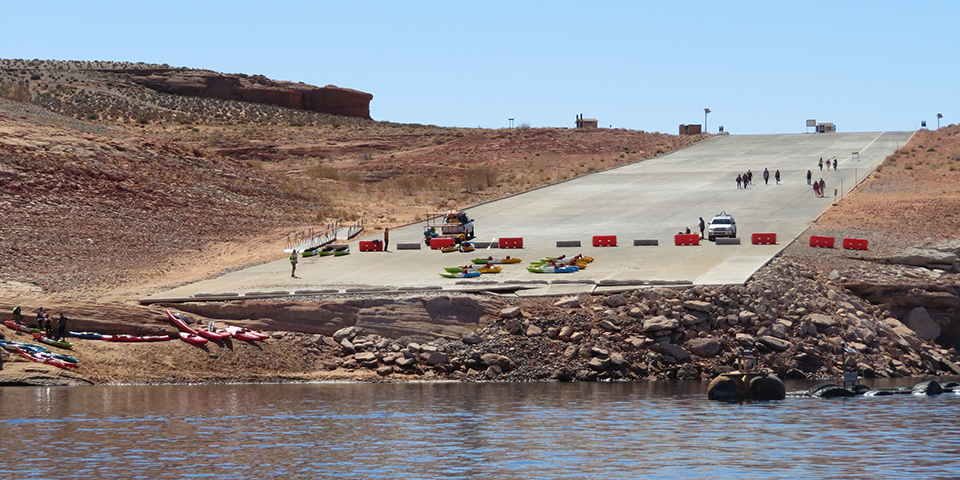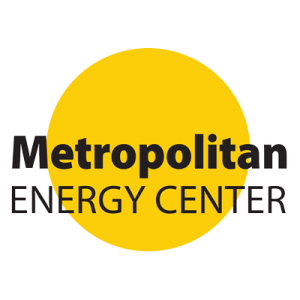July 12, 2023
Metropolitan Energy Center (MEC) is pleased to announce we were one of 27 applicants to get the green light from the U.S. Department of Energy to provide workforce development in support of better building policy.
MEC brought together partnerships within their extensive and diverse multistate network of 30 regional, state, and local community partners—including two growing community-based organizations—to build a workforce of energy-efficiency-related vocations in disadvantaged communities in urban and rural areas across Kansas and Missouri.
The selection rewards months of collaboration in response to our region’s need to upgrade its aging buildings to be more efficient, durable and healthy for human habitation. The initiative intends to support communities’ efforts to adhere to best-practice energy efficient construction for new and existing buildings—buildings science practices that lead to better human health, comfort, affordability, and resiliency in built environments.
The construction industry is facing change after the City of Kansas City, MO led a recent effort to update critical energy policy in our region. Other municipalities are expected to follow suit, an additional workforce is needed to support these efforts. Unfortunately, adequate training for energy efficiency and building science haven’t always been available. This initiative corrects that issue.
“As technologies improve and the industry learns more about the connection between building efficiency and human health, it is imperative that every community has access to resources to implement updated building construction policies,” said Mary English, MEC’s Building Performance Program Manager. “Especially as extreme weather events intensify, creating a skilled labor force to work in building performance vocations will lead to better buildings, better jobs, and more liquidity in the communities that have been left out of economic benefits by similar programs in the past.”
MEC is eager to begin working on the project with partners to equip communities across Kansas and Missouri with safe and healthy places to live, work and play for years to come.
About the Bi-State Partnership: Our partnership includes these organizations: Beyond Housing; Boys and Girls Club of the Ozarks; Cabanne District Community Development Corporation; City of Columbia, Missouri; City of Kansas City, Missouri; Climate Action KC (Building Energy Exchange Kansas City); Climate + Energy Project; Hathmore Technologies; J. Gordon Community Development Corporation; Kansas City Kansas Community College; Kansas Department of Commerce and Office of Apprenticeship; LivZero, LLC; Mid-America Regional Council; Midwest Energy Efficiency Alliance; Missouri Alliance of Boys and Girls Clubs; Missouri Botanical Garden and EarthWays Center; Missouri Gateway Green Building Council; Building Energy Exchange St. Louis; Missouri Department of Higher Education and Workforce Development; Missouri University of Science and Technology; National Institute for Construction Excellence; RATERusa, LLC; Resiliency at Work 2.0 Career and Technical Education; State of Missouri, Department of Natural Resources’ Division of Energy; Strategic Workforce Development; University of Missouri – Columbia; Verdatek Solutions, LLC; Workforce Partnership (Kansas); Washington Wheatley Neighborhood Association.
Kansas City, Mo. (August 1, 2023)
Results from a new preliminary study indicate that weatherizing living spaces can dramatically improve children’s health by improving indoor air quality and reducing exposure to outdoor air pollutants. The research project came about due to previous work and research of the Children’s Mercy Kansas City (CMKC) Healthy Homes Program, where hospital staff witnessed positive health outcomes with many of their young asthma patients whose families had enrolled in the program and received home weatherization repairs.
Dr. Elizabeth J. Friedman, MD, Medical Director of Environmental Health at CMKC said, “This is a great example of both how much our built environment can impact our health and why it is so important to consider our patients’ lives beyond our clinic walls.”
Weatherization is a building upgrade process that keeps indoor air in and outdoor air out. A good weatherization upgrade keeps you safe and comfortable in your home, no matter what the weather is doing. For nearly a decade, Kansas City-based nonprofit Metropolitan Energy Center (MEC) administered weatherization and energy efficiency renovations under various partnerships, including the City of Kansas City, MO’s EnergyWorks KC (EWKC) program.
A research partnership with MEC, CMKC and the Center for Economic Information at the University of Missouri Kansas City (CEI) brought even bigger data to the table for a more comprehensive picture of potential health improvements. Staff at CMKC and CEI matched MEC-weatherized homes with CMKC historic health data for acute care visits in children with asthma living in the homes. A research database maintained by CMKC provided encounter-level historic pediatric asthma data, and the CEI team collected additional geographic and census data as part of the KC Health CORE research collaboration with CMKC.
The team compared frequency and severity of healthcare visits before and after the upgrade and found “as much as a 33% reduction in the frequency of acute care visits for children with asthma” who resided in homes that received energy efficiency improvements.
Kevin Kennedy, Environmental Health Program, Children’s Mercy Kansas City, said that for their patients’ families, the preliminary report indicates that “even if you participate in a program like this weatherization program just to make improvements to your home, and not because you were thinking about a health impact, there can also be big improvements in your health, especially if you have a chronic respiratory condition like asthma.”
Kelly Gilbert, Executive Director of MEC said, “this stunning result demands more research to discover which home upgrades have the biggest impact on health, and we look forward to supporting that work in the future.”
The research team is preparing to develop and submit a peer-reviewed academic report with the goal of publication in a research journal later this year.
written by MEC Clean Cities intern Drew Arends
In the past year or so, there has been a multitude of funding opportunities released to promote electric vehicle infrastructure. While some of this funding has been automatically allocated to state governments, the rest of it is available through a competitive grant application process. With so much funding available, the “how” in obtaining this funding can be difficult for the everyday person. With sales of electric vehicles surpassing one billion dollars to date, there is no better time to shed light on how federal funding can be achieved, especially for those in the heart of the Midwest.
At Metropolitan Energy Center (MEC), a portion of the services we provide include consultations and grant writing services for anyone looking to find financial support for alternative fuel and energy efficiency projects. In this post, I will outline some helpful tips to find grants and three particular grants available for Missourians and Kansans.
Climate Program Portal is one central location for key funding opportunities and developments related to large pieces of federal legislation, most notably the Infrastructure Investment and Jobs Act (IIJA) and the Inflation Reduction Act (IRA). By enrolling in a free membership, you can have access to the details and deadlines behind various projects. When you become a member, the dashboard part of the site provides you with the most important information. For instance, as of (date of publication), there are 44 different requests for proposals (RFPs), requests for information (RFIs), and notices of intent (NOIs). These calls stem from a wide range of organizations, with the leaders being the Department of Energy (DOE) and the Environmental Protection Agency (EPA), but closely followed by state agencies and the Department of Transportation (DOT). Further along the dashboard, you can find the specific details of each proposal, with links for more information providing additional insight under the “source” column.
Currently, some of the biggest opportunities for Missourians and Kansans include the FRE, CRP, and the Charging and Fueling Infrastructure Discretionary Grants programs.
Freight Enhancement Program (FRE)
The FRE program is open to public and private entities to construct non-roadway projects to improve freight efficiency in Missouri. All project awards are subject to approval of the $3.25m included in the legislative budget (HB4) that is signed by Gov. Parson. Applications are due by 5p.m. May 19, 2023. Projects must be completed and billed to MoDOT by 6/15/2024.
A Call for Projects for the Carbon Reduction Program (CRP)
Mid-America Regional Council is soliciting project proposals for the Federal Highway Administration’s Carbon Reduction Program (CRP) for Federal Fiscal Years 2022-2024. Eligible Applicants include local governments, transportation agencies and non-profits located within MARC’s MPO Boundary (Johnson, Leavenworth, Miami and Wyandotte counties in Kansas, and Cass, Clay, Jackson and Platte counties in Missouri. MARC is providing office hours April 19, May 9 & 15 to answer any questions you may have. Project Applications are due May 19.
Charging and Fueling Infrastructure Discretionary Grant Program
This program is divided into two categories: Community Programs and Corridor Programs. The Community Programs category is more of a general group meant to provide funding for projects along parks, schools, roads, and parking lots, while the Corridor Programs are meant to assist with more complex projects along designated alternative fuel corridors. The total amount available for recipients is around $700 million (FY 2022 $300 million and FY 2023 $400 million) and one of those recipients could be a Missourian or Kansan like you! Eligible applicants include states or political subdivisions of states; metropolitan planning organizations; units of local governments; special purpose districts or public authorities with a transportation function, including port authorities; Indian tribes; U.S. territories; and authorities, agencies, or instrumentalities or entities owned by one or more entities listed above. Applications must be submitted electronically through grants.gov no later than 11:59 p.m., eastern time, on Tuesday, May 30, 2023. Applicants are encouraged to submit applications before the deadline, set up an account and regularly monitor for updates.
——
These are merely three examples of the many funding opportunities currently available. Representing various entities like nonprofits, local groups, state governments, and community-based organizations, they are a raindrop in the ocean compared to the numerous funding opportunities out there. As such, I recommend that for whatever reason you are seeking funding, you not only consult databases like Climate Program Portal, but the federal websites of places like the DOE, EPA, and DOT. Help is most definitely here, and it is the pleasure of those of us at MEC to help you find what you’re looking for. Our bi-weekly newsletter consistently provides you with information regarding funding, and our social media accounts (Twitter @KCCleanCities and @MetroEnergyKC; Instagram @metroenergykc ; Facebook @MetropolitanEnergyCenter) supply real-time updates. Of course, our services with grant writing and consultations go beyond these briefs and give you the opportunity to work alongside us.
With the right insight and partnership, your idea could be the next recipient of funding to advance sustainability efforts in your own community! For more information regarding ongoing funding opportunities, check out this page for follow-up blog posts, and sign up for our Clean Cities newsletter to follow all relevant updates and new funding opportunities.
——
Author Bio: Drew Arends has been a Sustainable Transportation Intern at Metropolitan Energy Center since November 2022. His primary efforts have involved newsletter production, campaign development, and community outreach. In his work, he has encountered several instances of funding opportunities, a few of which are highlighted in this blog piece. As Drew studies abroad for the next few months, he looks forward to contributing to the efforts of MEC through blog posts like these.
written by MEC Greater Kansas Clean Cities coordinator Jenna Znamenak
This article chronicles recent efforts by Metropolitan Energy Center (MEC) and its Clean Cities Coalitions to make electric vehicle operations a reality in areas that are often left out of new connectivity trends.
To a person who has always lived in a highly populated city, connectivity is a daily reality. Cities get the fastest internet, the most cell coverage, and more nicely paved trafficways. But for the 20% of the population of the United States who live in rural areas, equal connectivity has never been the norm.
As reported in the January/February issue of the Kansas Government Journal by Mike Scanlon, City Manager of Osawatomie, Kansas, “It is no secret that rural communities are historically left behind when the United States adopts the latest technology.” And in recent months, more rural leaders are seeing a potential pitfall that could widen the access gap for their communities: the advancement of electric vehicles (EVs).
As the latest consumer-use scenarios are analyzed and early-adopter reviews roll in, the reality is clear: EVs cost less money to fuel and to maintain than their gasoline-fueled counterparts. And with the recent monumental increases in grants and tax incentives for EV purchases, governments are becoming much more interested in EV funding pipelines than they are in vehicles fueled by oil pipelines. But urban and suburban governments are making the switch much faster than rural governments.
Scanlon is not surprised, but he is hopeful that this time rural America can keep up with the trend. “By 2030 the federal government proposed that half of all new cars sold in the U.S. will be zero-emission vehicles, with 50,000 electric charging networks. By proactively supporting rural EV development now, we can prevent history from repeating itself.” His article in the Kansas Government Journal, co-written with MEC’s Central Kansas Clean Cities Coalition coordinator Jenna Znamenak, prepares rural leaders with real facts and funding connections so they can stay in the fight to stay connected.
The most exciting grants on the list are the ones that get rid of nitrous-oxide-producing diesel school buses by helping school districts convert to EVs, for little to no cost to the schools. “These grants replace older school buses with electric school buses to reduce harmful emissions around children,” says Central Kansas Clean Cities coordinator Jenna Znamenak. But she says there are enough programs available through MEC’s grant assistance to help more institutions than just schools involved with the national sea-change.
For many rural leaders, adapting to standardizing trends sounds like “small budgets with not much room for experimentation, time constraints that do not allow us the ability to learn about technology, and grant opportunities that can look like a 10-acre corn maze,” says Scanlon. “That’s why we’re here for you—we’ve helped connect local communities and fleets to easier funding for clean energy for the past 40 years,” says Znamenak, referring to MEC’s stockpile of resource-accessing tricks and their dependable grant assistance services.
See the original article published in the Kansas Government Journal here.
To stay current on all available funding, sign up for MEC’s free newsletter at metroenergy.org/newsletter-sign-up. To talk to an expert about your next clean energy project, call 816-531-7283.
This morning, the U.S Supreme Court issued an opinion on the case West Virginia v. EPA (Environmental Protection Agency). The decision drastically limits the power of the EPA to interpret, dictate, and enforce policies that help protect our environment under the Clean Air Act of 1970.
With the majority of our city’s greenhouse gas emissions coming from the built environment and transportation, Metropolitan Energy Center (MEC) conducts crucial programs that help reduce emissions to make the Kansas City region safe, healthy, and energy efficient for all.
MEC remains dedicated to our mission: “creating resource efficiency, environmental health, and economic vitality in the Kansas City region and beyond.” To learn more about our work, please visit our website at metroenergy.org. We look forward to continued work with our community partners, stakeholders, and EPA Region 7.
written by Kansas City Regional Clean Cities Coalition director, David Albrecht
There’s a lot to like about electricity from hydropower. It produces zero emissions. It can respond quickly to sudden increases in demand. A dam can also protect against floods, store water to fend off drought, slake the thirst of cities and irrigate cropland while generating clean energy.
The Age Of Dams
Dams can even serve as sources of national inspiration. In the depths of the Great Depression, building Boulder Dam (now Hoover Dam) didn’t just provide thousands of desperately needed jobs. The project made news. It was the biggest dam ever tried, built in a searing desert environment. Vital engineering problems were solved with construction already underway. And it was proof that even during tough times, Americans could undertake big, ambitious projects and succeed. 10,000 spectators turned out in 102-degree heat when FDR dedicated the dam in September 1935, a job completed under budget and two years ahead of schedule.

Hoover Dam marked the start of what some have called the Age of Dams. From the 1930s through the early 1980s, America built thousands of large dams. Some are truly huge (like Grand Coulee on the Columbia), some just garden-variety big. These structures rerouted rivers, irrigated vast areas of land, and made desert cities like Phoenix, Los Angeles and Las Vegas possible. There are now about 100,000 large dams nationwide, 5,500 of them 50 feet high or taller. In 2019, America’s 2,400 hydropower dams generated 274 billion kilowatt-hours, a shade under 7% of all of our electricity. So, given all the benefits dams can provide, why aren’t we using more of this clean energy source?
Location, Location Location
It’s complicated. As implied above, only a small minority of dams provide power, and the biggest dams are federal projects. For these dams, there’s a kind of legal division of labor between multi-purpose dams providing power, storage and irrigation, and flood-control dams. Flood-control dams can generate power, but that’s not their main purpose. Example – the vast Fort Peck Dam in Montana has a volume of 96 million cubic meters, and generates 185 megawatts of power. Grand Coulee Dam has one-tenth the volume – 9.1 million cubic meters – but maximum electrical output of over 7,000 megawatts – 37 times more than Fort Peck. Different rivers, different sites, different designs – and different reasons for being. Fort Peck was designed for flood control, with some generation capacity. Grand Coulee was all about power. Could existing dams be retrofitted to generate more power? Possibly, but at high cost, and at the expense of other missions they’re required by law to fulfill.
In a sense, geography is in control. There are only so many rivers that are big enough to dam. On each of those rivers, there are only so many sites that make sense. Even then things don’t always work out. A case in point – Optima Dam. Sited on the North Canadian River in Oklahoma, Optima was completed in 1978, after 12 years of planning and construction. Today Optima Lake is effectively empty. The North Canadian was once fed by underground water from the Ogallala Aquifer. But over time, farmers have pumped so much water from the Ogallala for irrigation that there’s now nothing left for the river or the reservoir. Beyond extremes like this, nearly all the best locations were developed during the Age of Dams. What sites remain are, for the most part, remote, expensive or potentially dangerous.
Approaching An Age Of Extremes
There’s also maintenance. Dams look massive and unchangeable. But they’re subject to the ravages of time like we are (it just takes longer). By 2020, more than 70% of all the dams in this country were more than 50 years old. Really big hydropower dams like Hoover, Bonneville or Shasta are regularly inspected by federal authorities, but they’re the exception to the rule. And even these kinds of massive structures are now being put to the test by more extreme weather events. Oroville Dam in California faced disastrously sudden melting of a heavy snowpack in 2017. The result was an overloaded spillway, 200,000 residents evacuated and a repair bill north of $1 billion. The May 2020 dam failure in Michigan and the collapse of Spencer Dam in Nebraska during 2019’s intense “bomb cyclone” are examples of what can happen to older, smaller systems facing extreme stress without regular inspection.
Finally, dams have finite lives. They may endure for centuries, but in the end, all reservoirs will fill with sediment. In the Sierra Nevada, in hard rock terrain, a dam might endure millennia. But in much of the American West, where soils erode easily and where flash floods roll car-sized boulders, it’s different. Glen Canyon Dam on the Colorado was completed in 1963. It created a reservoir that could hold 27 million acre-feet of water. Today that reservoir – Lake Powell – can hold about 24.3 million acre-feet when full. That missing 10% – enough to cover 2.7 million acres with one foot of water – cannot be replaced, because there’s mud and sand where water used to be. The original capacity of Lake Mead, behind Hoover, was 32 million acre-feet. Today it’s down to 25.8 million – a loss of almost 20%. Ongoing drought, like the Colorado River basin is now experiencing, also limits electricity a dam can produce. The deeper the water above the turbine, the greater the energy output – and vice-versa. As reservoirs fall, so does potential power output. In a region where entire states depend on these dams and lakes, and the power they produce, these physical limits are becoming visible.

While the big picture may look a bit bleak, boosting clean energy output using existing infrastructure may be possible – while stabilizing the grid at the same time. At peak generation, California solar and wind power output is now so large that the state at times is forced to give away electricity. What if that renewable energy could be used to pump water from the Colorado back up behind Hoover Dam to generate more power? In effect, this would use the dam as a kind of battery, without the need for actual batteries. It wouldn’t be cheap. The Los Angeles Department of Water and Power, which supports the concept, estimates a cost of $3 billion, but these kinds of retrofits may be a path forward for enhanced hydropower generation and a more reliable electrical system.
KANSAS CITY, Mo. (November 8th, 2021) – The U.S. Department of Energy has selected Metropolitan Energy Center (MEC) for a $5.2 million award to lead electric vehicle (EV) and charging station projects under the Low Greenhouse Gas (GHG) Vehicle Technologies Research, Development, Demonstration and Deployment program. Funded projects will reduce diesel fumes in the air we breathe by supporting EV purchases, charging station installations, and outreach efforts to notify communities of these resources. The funds will also help small businesses and rural cities accelerate their transition to electric vehicles in Missouri and Kansas.
As part of the award program, eight businesses and municipalities in Kansas and Missouri have pledged more than 15% of their own project budgets in contributions to help smaller communities qualify for federal cost-share matching requirements. These businesses and muncipalities operate within environmental justice areas, opportunity zones, and other underserved areas. In addition to sedans, they are replacing small and heavy trucks with electric models. Diesel emissions from heavy vehicles and off-road machinery contribute to early deaths, asthma rates and family illness keeping people away from jobs and school. Those are just some of the health and social impacts from diesel fumes that affect the community members MEC serves.
Additionally, thanks to this award and generous overmatch contributions from some funding recipients, MEC can offer a small grant program for underserved communities. Small grant recipients will define for themselves what project features would be locally most beneficial, like projects to install public EV charging stations in parking lots and curbsides near multi-unit residential complexes and retail businesses. The success of the program depends upon placing EV charging stations within underserved or rural areas that feel the effects of environmental justice issues.
Executive director Kelly Gilbert said, “MEC will use our access to reach and empower communities in underserved urban and rural areas. We will provide funds that communities can use in the ways that they decide will best meet their local needs. We’ve seen that publicly funded EV chargers are even less likely than privately funded chargers to land in underserved areas, and it is important to change that trend.”
The award is expected to be finalized and the project to begin in early 2022; small grants are expected to be available in 2023. Organizations interested in learning more about the upcoming small grant program opportunities should contact Miriam Bouallegue at miriam@mec.bluesym10.work.
written by Kansas City Regional Clean Cities Coalition director David Albrecht
There are plenty of popular ideas floating around about alternative energy, and about energy in general. Many are flawed, conspiratorial or just plain wrong. Should we call them “myths”? After all, a myth, even though supernaturally themed or wildly imaginative, can still be valid, revealing truths about human nature. The Odyssey or the tales of King Arthur come to mind. On the other hand, trying to explain something about the physical world by means of imaginative story-telling is a risky proposition. A case in point:

Anyway . . .
We do have a reliable system in place which does a really good job of explaining the physical world. It’s called “science”. Perhaps “meme” is the best name with which to tag these ideas in the age of cloud-based, cloudy online information. So, without further ado, here’s the first in a series of takes on popular memes about energy, renewable and otherwise – and what the data say.
The Deadly Menace of Wind Turbines . . . and Cats and Buildings and Cars . . .
Wind turbines can and do kill birds and bats. Fish and Wildlife Service estimates for the US range from 140,000 to around 500,000 birds killed per year. Songbirds account for the most fatalities, with raptors second. Digression – weirdly enough, it appears that the cause of death, at least for bats, isn’t being struck by blades. Instead, scientists have discovered that barotrauma (like the bends for scuba divers) may be the specific mechanism. Sudden, dramatic air pressure changes near blade edges are believed responsible for rupturing the lungs of bats found dead in wind farms with no other signs of injuries. End of digression.
As in real estate, optimal wind turbine placement is all about location. This is true for the site in general, and where you place individual wind turbines within a given facility. The original Altamont Pass wind farm (famously featured in the 80s movie “Less Than Zero”) in California is a classic example of a bad location, and was lethal to birds. At its peak, over 6,000 small turbines, some dating back to the 1970s, ran at high speeds birds had no chance of avoiding. At peak turbine count, Altamont Pass was killing more than 10,000 birds every year, including more than 2,000 eagles, hawks and owls. The good news is that after years of pressure and delays, removal of the oldest and deadliest turbines began in 2015. A complete replacement of 569 remaining 100 kW units with just 23 modern turbines was planned for completion by 2022. Problems are likely to persist after the repower. Even running at slower speeds, new turbines are so tall that their blades operate at the flight height of nocturnal migratory birds. But since upgrades and removals began at Altamont, overall bird deaths have dropped there by between 40 and 50%.
Where do wind turbines rank as a threat to wild bird populations? Short version – very close to the bottom. In 2018, the US Fish and Wildlife Service published its estimates for bird deaths by cause, drawn from multiple scientific studies. Here are their low-range numbers:
- Oil Pits: 500,000
- Electrocutions: 900,000
- Collision with electrical lines: 8,000,000
- Poison: 72,000,000 (median estimate)
- Collision with vehicles: 89,000,000
- Collision with building glass: 365,000,000
- Cats: 1,400,000,000
- Wind Turbines – 234,000 (mean estimate)
Bear in mind that this total – 1,838,400,000 bird deaths – is the sum of low-range estimates (with the exception of poison). High-range totals for the same categories produce an estimate of 3,536,700,000 annual bird kills through various human activities (and, of course, the activities of our four-footed, long-tailed furry friends). Even high-end estimated totals of bird deaths through wind turbines (327,586) amount to a total of .0092% of total mortality in the same high-end estimate. As wind power expansions continue, raw numbers of bird deaths will likely rise as well, but at a very low overall percentage of total mortality.
Wind Turbines And Human Health
The dangers of wind turbines to birds and bats are established. To some degree, they can be mitigated. What about us? For years, studies and anecdotal evidence have shown there are issues with noise from turbines. As noted by the College of Family Physicians of Canada, turbine noise can disrupt sleep, particularly as wind speed varies. The consensus : these issues are real, and reduce quality of life, and the closer people live to large turbines, the worse these problems.
Others living near wind farms have reported problems including headaches, fatigue and depression. These have been blamed on the flickering shadows produced by blades, or on infrasound – sounds too low for humans to perceive. However, an exhaustive study by the Council of Canadian Academies, which covered peer-reviewed, unpublished, and “gray literature” found only “limited” causal links between wind turbines and sleep deprivation. Evidence of connections to more serious issues – vertigo, heart disease, diabetes – was “insufficient”. In addition, other reports noted the following:
People living near wind turbines who received rent from them were “less likely to report adverse health effects” than other living nearby:
In two studies, two groups of test subjects were exposed either to silence, or to infrasound, through headphones after watching videos. Those who watched a video warning of the dangers of infrasound were more likely to report symptoms and more severe symptoms from infrasound, even if they were exposed to silence. Those watching a video minimizing the same dangers were less likely to report any symptoms.
To the best of our knowledge to date, the dangers to birds from wind power are real, but limited. The dangers to people seem minimal, though noise exposure can be harmful. And the successful uptake of a new technology doesn’t just mean the act of adopting it, but doing so carefully, with ourselves and the rest of the world in mind.
About Us
Metropolitan Energy Center (MEC) is a 501(c)(3) nonprofit organization. Our mission is to create resource efficiency, environmental health, and economic vitality in the Kansas City region – and beyond. Learn more about us and our programs.
Recent Posts
- Spring Cracks Open at Project Living Proof
- Future Work Is Here: Can We Take the Offer?
- Kansas City’s Agora: Safeguarding our Library as a Sanctuary and Beacon of Innovation
- Kansas City’s Future Depends on Smart Energy and Transportation Investments
- Driving Rural Innovation: Orange EV’s Push for USDA Support







